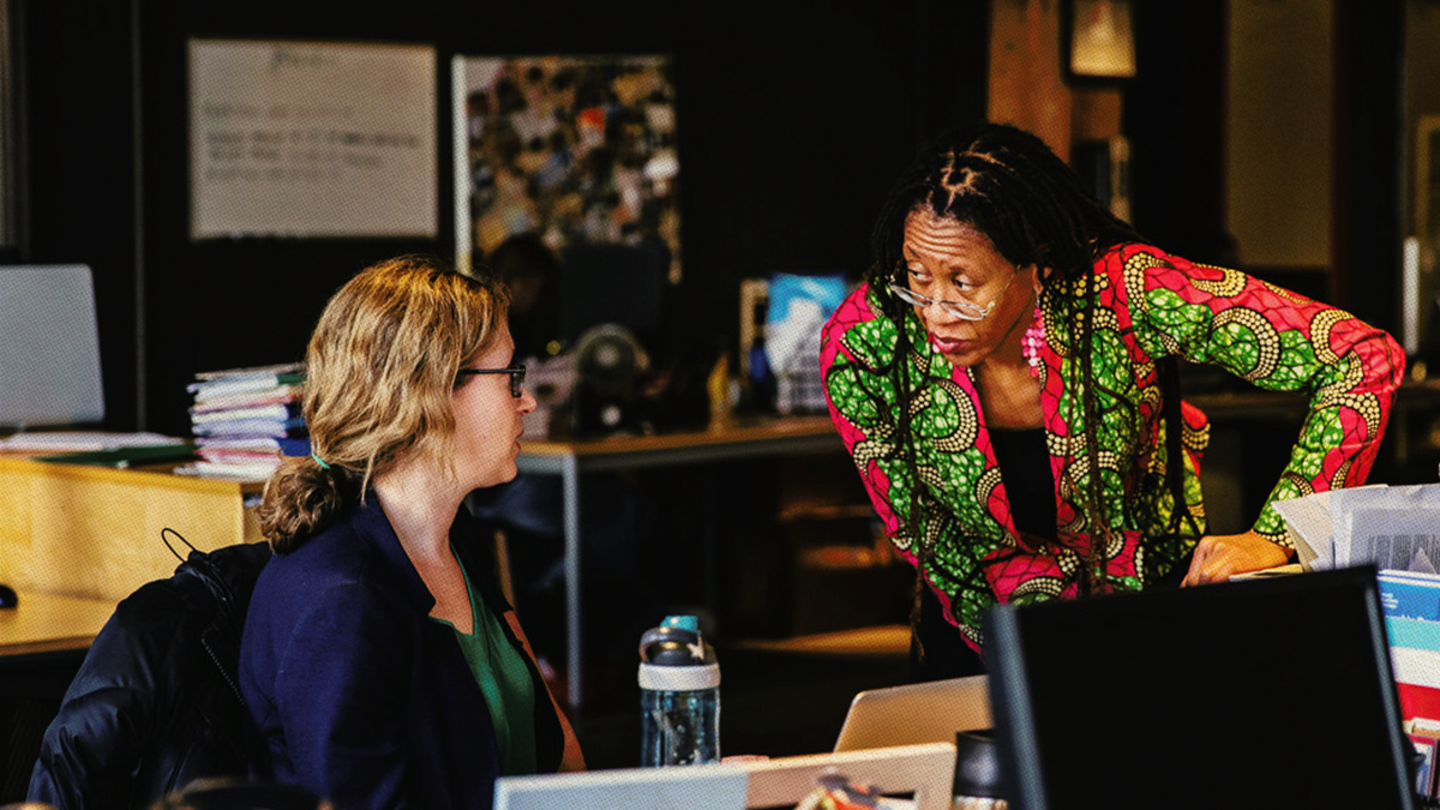The term “human potential” might sound theoretical — but according to Taylor McLemore, the co-founder of Human Potential Capital, it’s anything but.
“Human potential is really a belief in this world not being a zero-sum game,” McLemore said. “Our ingenuity, our innovation, and our collective empathy for each other is what enables us to believe this. But how do we unlock it?”
Broadly speaking, the human potential movement supports organizations as they create environments where employees have the opportunity to explore, discover, and pursue unique skills and strengths that benefit them as individuals and improve organizations and communities.
This has different applications in different areas of life, whether at school, home, the workplace, or in the community. When applied in the workplace, employers evaluate ways to promote employee growth while workers identify and strengthen their own talents.
This framework is crucial considering 44% of Americans feel burned out at work. Exhaustion and dissatisfaction extend beyond the workplace: 45% report feeling “emotionally drained” by their jobs, and 51% feel “used up.” In this age of remote and hybrid work models, the boundaries between work and personal life can easily blur, making it clear that employers and companies play a huge role in their employees’ quality of life.
According to McLemore, the traditional relationship between employee and employer has largely been transactional. Employees were expected to mold to their bosses’ expectations and deliver services or products accordingly. But if that paradigm were to shift into one of mutual benefit, in which both sides continually engage in reflection and collaboration based on evolving goals and strengths, then both can win.
Sign up for Stand Together's Rethinking Work & Learning newsletter to get the latest stories, ideas, and trends on the future of employment.
That doesn’t just mean more satisfied and motivated employees — it also means better numbers for a company’s bottom line.
This idea is catching on. In October 2024, a burgeoning cohort of employers, investors, and problem-solvers are meeting in Denver for the Human Potential Summit to explore how to shift workplace culture towards mutual benefit and fulfillment for all — for good.
Here McLemore lays out concrete steps both employers and employees can take to crack open workplace potential and pursue higher levels of meaning and motivation.
“How much do we believe in each other?” McLemore said. “And how much are we willing to build systems of trust so that we can [continue to] build together?”
How any organization can elevate human potential in their work
Understanding what human potential means is just the first step. For leaders to incorporate it into the mission and everyday practice of an organization, McLemore suggests a few main steps:
1. Don’t gatekeep growth opportunities.
Every person in an organization has unique talents to offer — but they aren’t all given a chance to demonstrate them. Too often, these opportunities for promotions or role transitions go to managers, directors, or employees who’ve acquired graduate degrees.
Employers should remember that each individual can contribute to an organization’s larger purpose, whatever their background or current role.
“When we talk about work systems, they’re massive,” McLemore said. “They’re multi-dimensional. So when you think about system change, you need to really think about it from using multiple levers.”
2. Stop thinking of the employee life cycle in the typical steps of attracting, hiring, retaining, and separating.
According to McLemore, this downplays the importance of retaining employees, which he characterized as the most important phase in the life cycle. Instead, employers should reframe the life cycle into “offering [employees] mobility and creating pathways where they get to learn and grow and repeat that endlessly.”
It starts with hiring people based on their aptitudes rather than their current experience or skill sets. Instead of focusing on the rigid requirements of a job description, employers can consider the larger values they’re looking for and how a candidate’s mindset, goals, and strengths align.
“In this world that is evolving and dynamic at a speed that we’ve never seen before, how can we adapt faster and more effectively?””
Taylor McLemore
Co-Founder, Human Potential Capital
3. Acknowledge that no organization knows how to measure talent potential yet — but recognize that your organization can play a key role in developing an effective solution.
McLemore encouraged business leaders and supervisors to examine the unique skills and aptitudes of their workforce and invest in each individual’s potential to begin to “unlock how you’re going to become even better as an organization.”
To illustrate what this looks like in practice, McLemore pointed to Escalate, an organization that works with Human Potential Capital.
Escalate is an online platform that helps employers reduce turnover by providing upskilling opportunities for employees. In 2024, the organization partnered with CVS to offer front-line employees — typically working at the register or in delivery — opportunities to express their career interests and acquire skills needed to advance into middle management roles, including store manager or IT specialist positions.
They are investing in human potential, which benefits more than just employees. It gives businesses a competitive edge. By tapping into the existing talents within their workforce, companies often see improvements in retention, productivity, and creativity.
“We need to embrace the fact that without people, you cannot build organizations of impact and scale that will influence the world,” McLemore said. “So how do we stop treating humans as costs to minimize but rather as opportunities to unlock value in our companies?”
4. Employers set the stage, but employees deliver the results.
“There are lots of us humans, but we have no one but ourselves to take care of each other and to uplift each other and challenge what we could do,” McLemore said. Empowering employees with agency, flexibility, and investment means holding them to higher standards. When employers create those opportunities for growth, it is ultimately up to the employees to bring the effort and drive needed to pursue that growth.
The results could be transformational for workers, employers, and communities. The organizations taking part in the Human Potential Summit this October are part of a larger movement in which businesses and nonprofits understand the power of investing in human potential.
“In this world that is evolving and dynamic at a speed that we’ve never seen before, how can we adapt faster and more effectively?” McLemore asked. “Humans are going to be the part that figures that out, and that will lead to your organizational success. … Thinking about helping people through economic mobility and how you run a company, [those choices] are mutually inclusive. That’s a world we believe will dominate far beyond how companies perform long-term.”
***
The Stand Together community partners with changemakers who are tackling the root causes of America’s biggest problems. Learn more about Stand Together’s efforts to transform the future of work and explore ways you can partner with us.

Why AI may help more people achieve the American Dream.

Data centers are at the forefront of the ‘new economy.’ But what exactly are they?

Here’s how to bridge the disconnect between employers and employees.

Lessons learned from Colorado.
